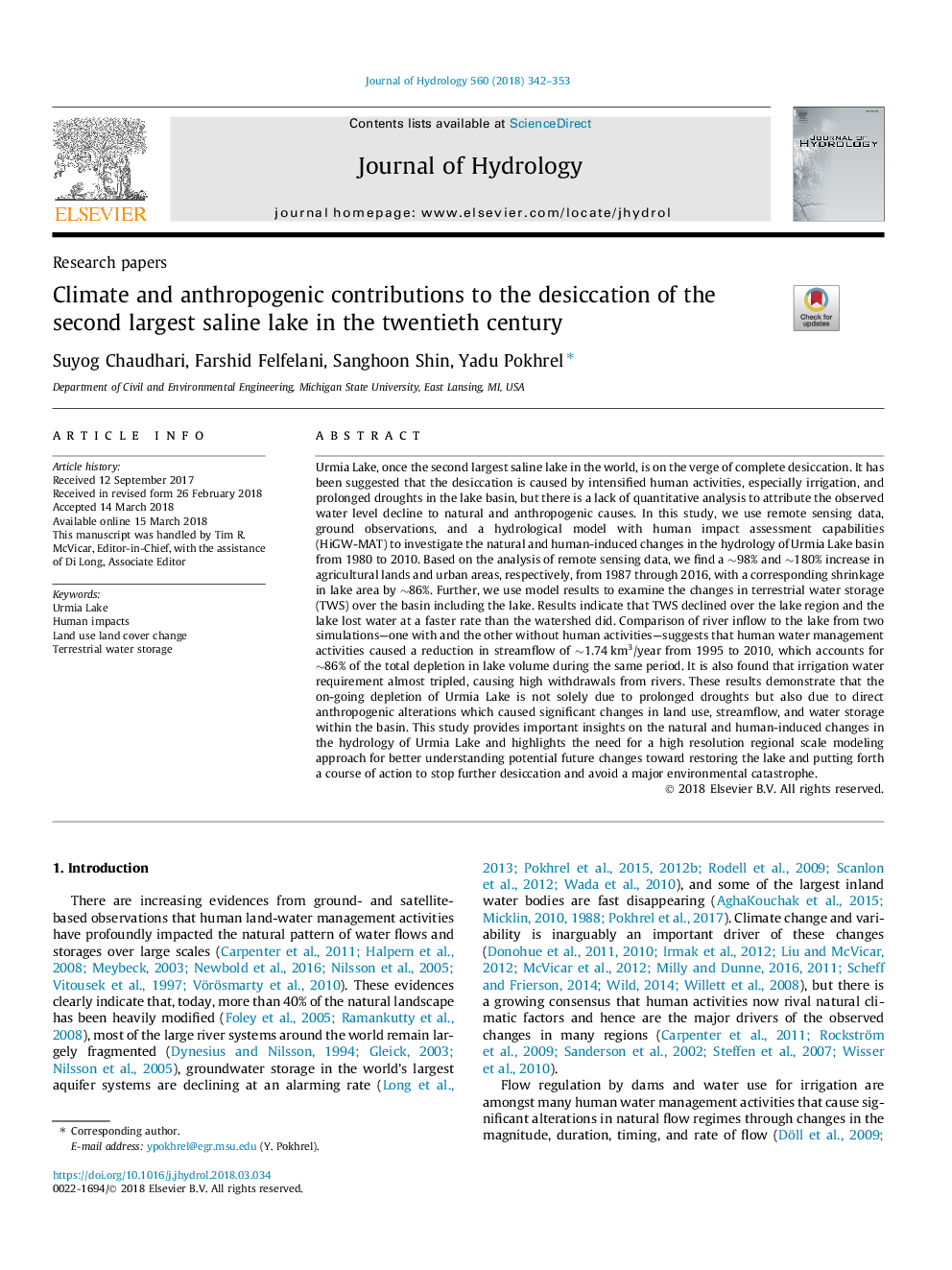| کد مقاله | کد نشریه | سال انتشار | مقاله انگلیسی | نسخه تمام متن |
|---|---|---|---|---|
| 8894793 | 1629894 | 2018 | 12 صفحه PDF | دانلود رایگان |
عنوان انگلیسی مقاله ISI
Climate and anthropogenic contributions to the desiccation of the second largest saline lake in the twentieth century
ترجمه فارسی عنوان
کمک آب و هوا و انسان شناسی به خشک شدن دومین دریاچه سالین در قرن
دانلود مقاله + سفارش ترجمه
دانلود مقاله ISI انگلیسی
رایگان برای ایرانیان
کلمات کلیدی
دریاچه ارومیه، تاثیرات انسانی، تغییر زمین زمین استفاده از زمین، ذخیره آب زمینی،
موضوعات مرتبط
مهندسی و علوم پایه
علوم زمین و سیارات
فرآیندهای سطح زمین
چکیده انگلیسی
Urmia Lake, once the second largest saline lake in the world, is on the verge of complete desiccation. It has been suggested that the desiccation is caused by intensified human activities, especially irrigation, and prolonged droughts in the lake basin, but there is a lack of quantitative analysis to attribute the observed water level decline to natural and anthropogenic causes. In this study, we use remote sensing data, ground observations, and a hydrological model with human impact assessment capabilities (HiGW-MAT) to investigate the natural and human-induced changes in the hydrology of Urmia Lake basin from 1980 to 2010. Based on the analysis of remote sensing data, we find a â¼98% and â¼180% increase in agricultural lands and urban areas, respectively, from 1987 through 2016, with a corresponding shrinkage in lake area by â¼86%. Further, we use model results to examine the changes in terrestrial water storage (TWS) over the basin including the lake. Results indicate that TWS declined over the lake region and the lake lost water at a faster rate than the watershed did. Comparison of river inflow to the lake from two simulations-one with and the other without human activities-suggests that human water management activities caused a reduction in streamflow of â¼1.74â¯km3/year from 1995 to 2010, which accounts for â¼86% of the total depletion in lake volume during the same period. It is also found that irrigation water requirement almost tripled, causing high withdrawals from rivers. These results demonstrate that the on-going depletion of Urmia Lake is not solely due to prolonged droughts but also due to direct anthropogenic alterations which caused significant changes in land use, streamflow, and water storage within the basin. This study provides important insights on the natural and human-induced changes in the hydrology of Urmia Lake and highlights the need for a high resolution regional scale modeling approach for better understanding potential future changes toward restoring the lake and putting forth a course of action to stop further desiccation and avoid a major environmental catastrophe.
ناشر
Database: Elsevier - ScienceDirect (ساینس دایرکت)
Journal: Journal of Hydrology - Volume 560, May 2018, Pages 342-353
Journal: Journal of Hydrology - Volume 560, May 2018, Pages 342-353
نویسندگان
Suyog Chaudhari, Farshid Felfelani, Sanghoon Shin, Yadu Pokhrel,
